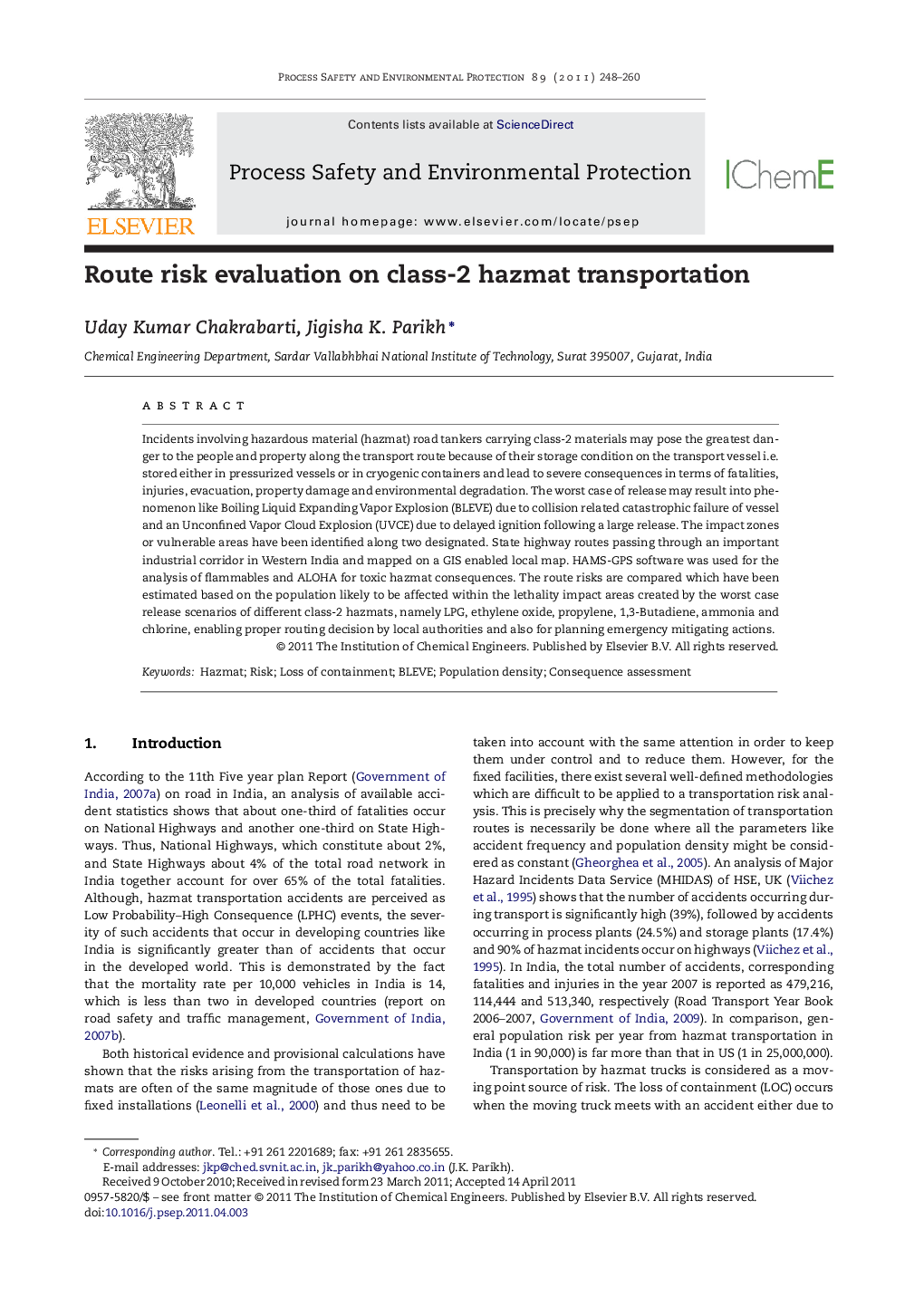| Article ID | Journal | Published Year | Pages | File Type |
|---|---|---|---|---|
| 588557 | Process Safety and Environmental Protection | 2011 | 13 Pages |
Incidents involving hazardous material (hazmat) road tankers carrying class-2 materials may pose the greatest danger to the people and property along the transport route because of their storage condition on the transport vessel i.e. stored either in pressurized vessels or in cryogenic containers and lead to severe consequences in terms of fatalities, injuries, evacuation, property damage and environmental degradation. The worst case of release may result into phenomenon like Boiling Liquid Expanding Vapor Explosion (BLEVE) due to collision related catastrophic failure of vessel and an Unconfined Vapor Cloud Explosion (UVCE) due to delayed ignition following a large release. The impact zones or vulnerable areas have been identified along two designated. State highway routes passing through an important industrial corridor in Western India and mapped on a GIS enabled local map. HAMS-GPS software was used for the analysis of flammables and ALOHA for toxic hazmat consequences. The route risks are compared which have been estimated based on the population likely to be affected within the lethality impact areas created by the worst case release scenarios of different class-2 hazmats, namely LPG, ethylene oxide, propylene, 1,3-Butadiene, ammonia and chlorine, enabling proper routing decision by local authorities and also for planning emergency mitigating actions.
► The ongoing research aims at route risk evaluation from class-2 hazmat transportation. ► Class-2 hazmats due to their storage conditions, pose BLEVE and UVCE hazards. ► These worst-case scenarios cause fatality and injuries along the transport routes. ► Consequence analysis was conducted for these hazmats to identify the impact areas. ► Route risks estimated based on population exposure within the impact area, compared.
